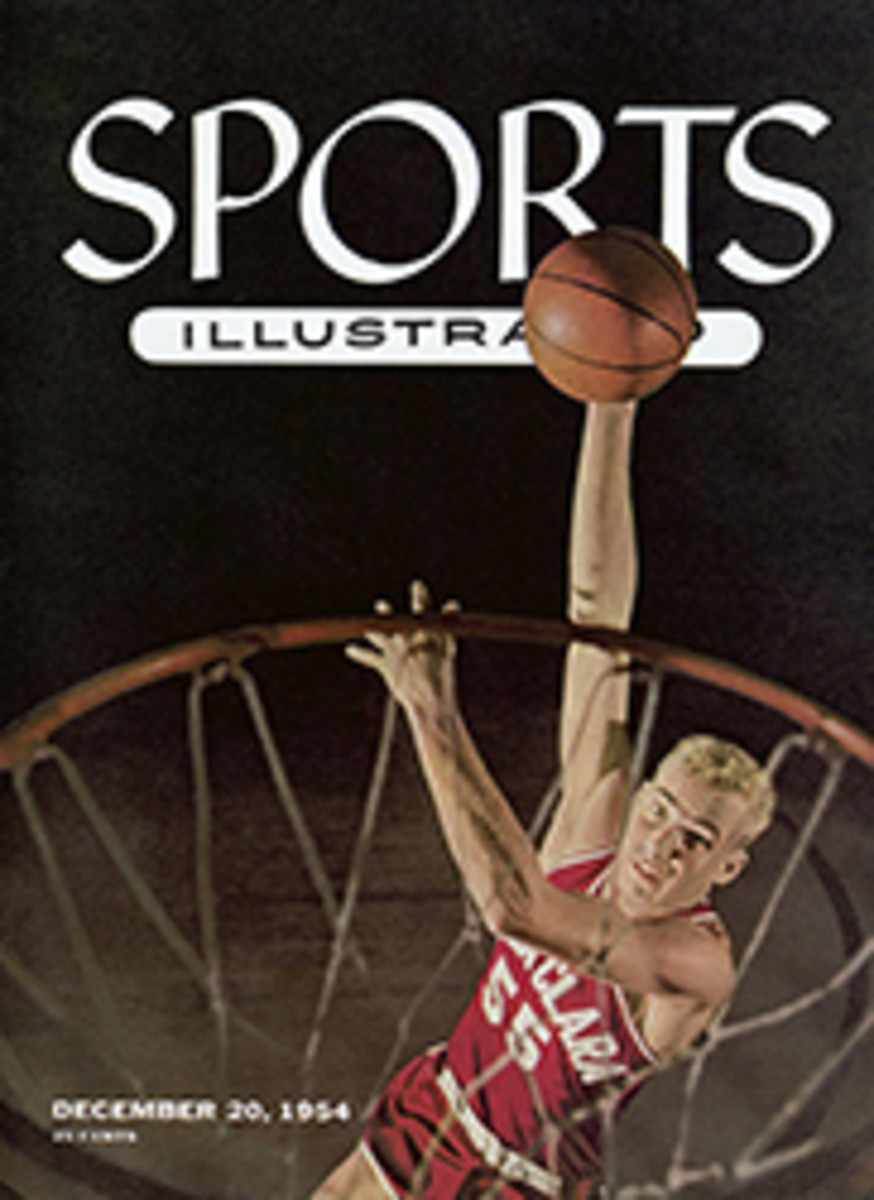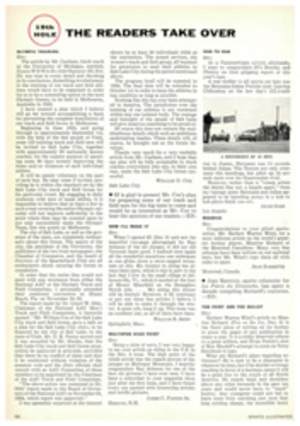
FLEECY FROSTBITERS
Judging by the pictures on this page, some sailors don't seem to know when to come off the water. It used to be that once the frost was on the pumpkin, yachtsmen north of the Mason-Dixon line tucked their boats away and waited impatiently for spring.
This all began to change more than 20 years ago when a small group of Long Island yachtsmen were debating the relative merits of two new sailing dinghies. Since the dinghies had never raced against each other, the debate was getting noisier and more fruitless by the minute, because there were no prospects of settling anything until the following spring. But someone suddenly said: "Why not drag 'em out of the garage and race right now?" This historic utterance resulted in a dinghy race on Jan. 2, 1932 at Manhasset Bay, Long Island. Nine boats and about 100 hardy sailors showed up. It was so cold and windy that a local sportswriter covering the event termed it "frostbiting," and so this out-of-season sailing has been known ever since.
THE CUSTOM CHANGES
Frostbiting proved such good sport that the original group, augmented by many others, continued to race every weekend that winter. In the next few years, with more and more keen racing men joining in, frostbiting became increasingly serious. Not satisfied with the original motley fleets of boats, frostbiters went to various name designers to get new dinghies custom-built. About their only resemblance to the original was a common length of 11½ feet and a sail area of 72 square feet. Since these new boats were all built to order, they became ridiculously expensive, so much so that they threatened to wreck the sport. To forestall this, frostbiting reverted before the war to several one-design classes and has continued to flourish ever since.
Frostbiting is not confined to Long Island Sound sailors, either. Over the years, it has caught on throughout the nation. Marblehead, Chicago and various California harbors are just a few of the active centers where dinghy racing goes on all winter. Down South they're doing it, too, but under the less beguiling name of sunburn regattas.
To one who has never participated—to say nothing of non-sailors—frostbiting may appear as the lunatic fringe of yachting. Its steady growth, however, proves it has something. First and most surprising is the fact that it isn't particularly cold. Go stand on a pier or spectator boat and you will nearly freeze. But don't waste your pity for the guys and gals out sailing. They aren't freezing, not if they are veterans. They know how to dress for it—plenty of layers topped by an outer one which is waterproof and windproof, and fleece-lined boots. These little boats are so quick in their movements that the crew has to keep active all the time. Just as in skiing, the exercise keeps the sailors warm.
NOT ONE FATALITY
Capsizing is another matter. There's not a frostbiter alive who enjoys swimming when part of the harbor is covered with ice, and few are the frostbiters who haven't had such a dunking at least once. This could be serious, too, since a swimmer can't last long in such waters, but the presence of a "crash boat," required by all experienced frostbite groups, has prevented a single known fatality in the 23 years of the sport.
Frostbiting appeals primarily to the keener sailors. Arthur Knapp, one of the most frequent frostbite winners and past world Star champion, former International One Design leader and one of the afterguard on America's Cup Defender Ranger in 1937, summed up his love of frostbiting as follows: "What I like best about it is the training it gives. By sailing six to eight races a day on short courses, one keeps brushed up on tactics, rules and timing. It's a wonderful school for skippers. No matter where you finish, it helps you sail your bigger boat better when summer comes." And Jack Sutphen (1954 Long Island Sound Frostbite champion) adds: "In the summer I enjoy family cruising and hence don't have time for racing. In frostbiting, I can match wits with the best skippers, at far less cost than racing in a keen summer class, and can still have the whole summer free for family cruising."
PHOTO
UNDISMAYED BY BITTER WEATHER, FROSTBITERS PARADE ON LONG ISLAND SOUND
PHOTO
FROSTBITERS Robert Wolfe and Danny Connell come off cold and damp but happy.

